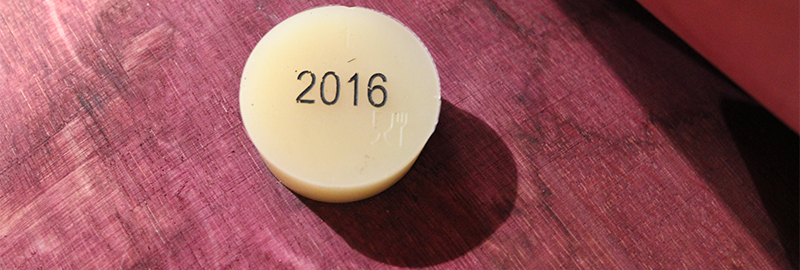 2016 began wet, but warm enough that bud-break was a week early, at the end of March. It stayed wet, and was slow to warm up – but Bordeaux did largely avoid all the problems of frost and hail that beset other areas of France.
2016 began wet, but warm enough that bud-break was a week early, at the end of March. It stayed wet, and was slow to warm up – but Bordeaux did largely avoid all the problems of frost and hail that beset other areas of France.
Flowering began around the last week of May, and although there were a few showers, the week was a window in which the flowering took place briskly, with little coulure, and fruit set was better than in some recent vintages, giving the basis for the eventual higher yields. Over the first six months of the year, rainfall was over 60% higher than average, and there were certainly fears that this high fruit load would not ripen in time.
After the first half of June, there was a complete turnaround, and it became both hot and dry – indeed the dry weather (over 50% less rain than average in this spell) lasted all the way to September 13th. By mid-August there were signs of young vines shutting down from drought in some of the free-draining gravels, delaying eventual maturity. There was also limited sunburn of some exposed grapes. On the 13th September, there was a significant dousing, which came a relief for some of the more stressed areas (although too late for some – Alexandre Thienpont at Vieux Chateau Certan told us that it was simply too late for the young Cabernet Franc vines on gravels, where the fruit now deteriorated faster than it could ripen), but the drought was not a major problem for most of the vineyard, thanks to the level of groundwater following the wet winter. It was hot through the summer, especially 17th-19th July, 13th-16th August and 23th-27th August, but there remained a strong cooling effect at night, with a big difference between night and day temperatures.
With the red wine harvest stretching from the last week of September to the end of October, it was important for the eventual quality that it stayed dry – and apart from rain in the night of the 30th September and a few light showers, it was perfect. September and October seem to have allowed a very long and slow approach to complete maturity. Winemakers were at liberty to wait until the abundant tannins were as ripe as they needed to be to avoid any harshness. As some experts noted, that fact that you could wait did not always mean that you should. The choice of picking dates was an interesting subject during the tastings, but, as ever, there are so many variables that early or late can turn out to be just as successful.
Pierre Taïx of La Mauriane told us that they had almost a year’s worth of rain by the 20th of June – over 600mm. This is the first time they’ve made a good vintage with so much rain. From the 30th May it was fine for nearly a week and the flowering happened in four days, which was perfect. There’s usually a difference in the flowering dates of the Merlot and Cabernet Franc, but they happened together and consequently achieved perfect ripeness together too. This brought its own problems for the growers when it came to getting the harvest in.
For more on what this means for the wines, read 2016 Bordeaux: Vintage Style.

